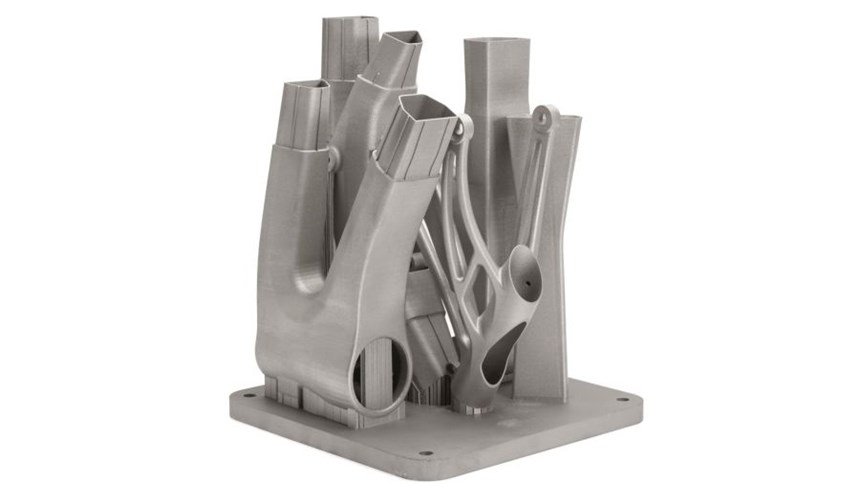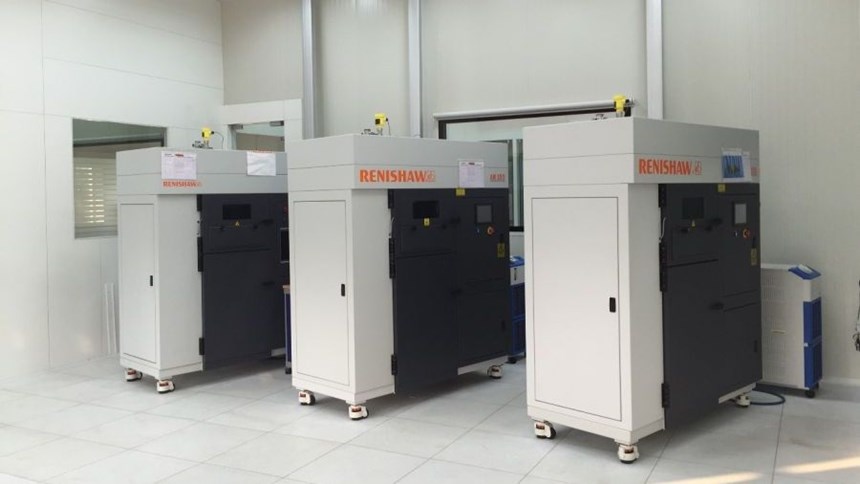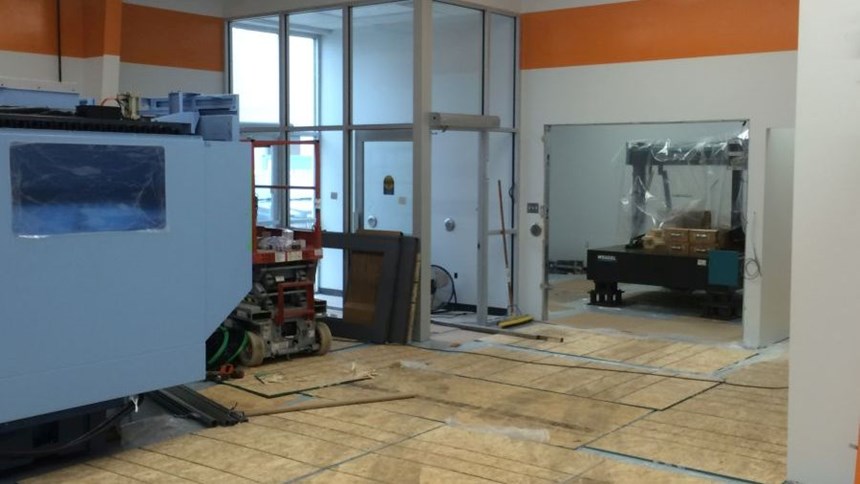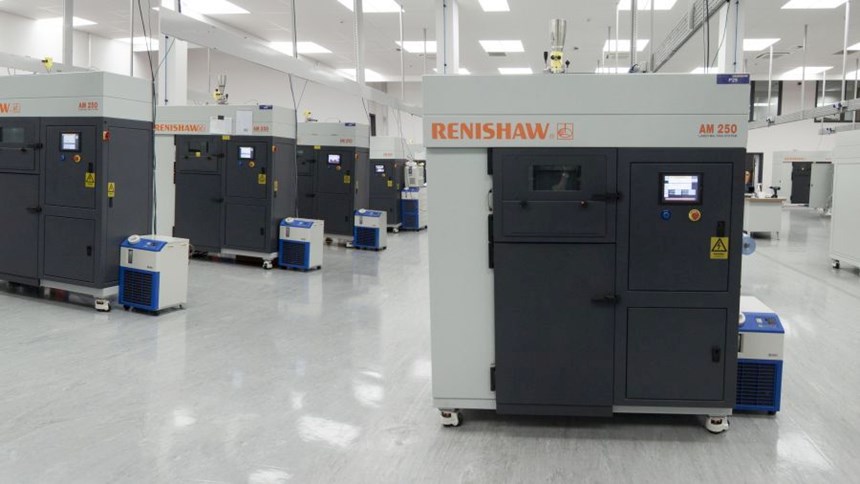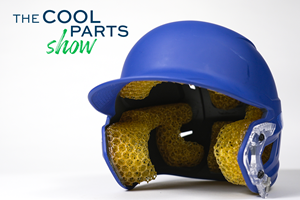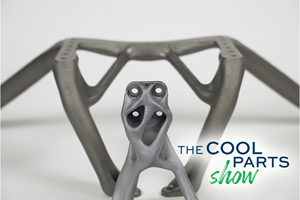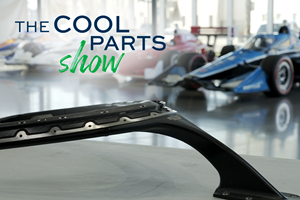Lowering Barriers, Part Two: An Update on Renishaw’s Solutions Centers
Currently in progress, Renishaw’s Solutions Center Network is intended to help manufacturers learn to use additive manufacturing effectively.
According to Renishaw, the first step to easing additive manufacturing integration is to teach users how to apply AM thinking to processing and design of parts. This belief lead the company to introduce its “Solutions Center” concept at EMO last fall, a plan that calls for the creation of 10 such centers within the next year. (Learn more about the concept here.) Each of these Centers will offer equipment and expertise to help AM users apply the technology, but a key goal is to help manufacturers learn to think with an AM mindset.
Building Progress
Marc Saunders, Renishaw’s director of global solutions centers, says the company has made great progress with the development and expansion of its Solutions Centers throughout the world since that announcement. For example, the company has completed construction on the first Solutions Center in Pune, India, which is now open for business. “We believe this to be the largest AM facility in India with three machines running today and another machine planned for early next year,” says Saunders. It is the site for a lot of development testing. Pune is also where Renishaw is developing AM software, including the new QuantAM build software that was introduced at Formnext.
Other Solutions Centers are on their way to completion as well. The Healthcare Center of Excellence in Miskin, South Wales, is now operational with dental and orthopedic implant production transferred from another site. Construction is also complete on a new building in Kitchener, near Toronto, and machines are being moved into the facility. A building has also been purchased in Richardson, Texas, near Dallas, with construction underway and a planned opening in March. Construction on both the flagship center in Stone, United Kingdom, and the German center in Pliezhausen, near Stuttgart, has also started. Lastly, a new building in Chicago is also under construction with completion anticipated by next summer.
The Vision
Each completed Renishaw Solutions Center will serve as a supported learning center for all things AM by helping potential and current users uncover AM’s possibilities, identify appropriate applications, learn best practices and examine the investment case. Every Center provides a secure development environment for prototyping, remanufacturing, part consolidation and design optimization exploration. Secure and supported access to every step of the AM process is achieved within an “incubator cell” staffed with an operator and applications engineer to consult with customers on concepts, assist with benchmarking part designs and test out processes.
Dedicated engineering and technician expertise is available within each Center, as well as non-AM equipment including five-axis CNCs for finishing and CMMs for inspection. Resources also include private offices in which to collaborate; a materials lab for QA analysis; finishing methods for support removal, polishing and surface treatment; a heat treatment room; and powder management via sieving and filter replacement. Customers begin by paying for time in the cell, but the end game in any given case is to develop a complete process to manufacture production parts.
Applying AM Thinking
But actually applying AM thinking requires more than having the right tools in place. It also requires implementing a different approach to processing and design, sharing best practices, and examining investment cases for each customer, all services that the Centers provide.
As an illustration of the design for AM (DfAM) approach used in the Solutions Centers, Saunders turns to Renishaw’s production of the world’s first 3D-printed mountain bike and the steps taken to redesign the seat post. This project entailed investigating ways to minimize weight and keep costs down. Topological optimization was used to examine material stresses and thereby determine optimal part shape and build.
Saunders explains, “The careful application of engineering processes allowed us to build a bike frame that is significantly lighter than the original, and yet still exhibits the ruggedness that is essential for extreme off-road cycling.” He emphasizes that this project demonstrates the close interaction between product and process design that is inherent to AM. The process freedom AM offers allows product designers and manufacturing engineers to collaborate to make impossible products possible.
Beyond design, the Center teams also share best practices for other aspects of AM—for example, the value of an effective process chain. “It is essential to consider the rest of the process chain that you'll need to produce your product,” says Saunders. “Information must flow up and down the chain to link processes together. Successful AM requires an effective process chain with user-friendly design tools and a range of postprocessing and metrology equipment.”
Assisting customers in making an educated AM investment is another vital service of the Solutions Center Network. This involves fully understanding a customer’s design requirements, and then proposing how these can be realized with a feasible build (orientation, supports, layer thickness, laser parameters, etc.), which results in a build time and a cost. “We may move through several design iterations that yield varying product performance levels and carry different manufacturing costs, so we gather this data for the customer to help establish the best trade-off between producability and performance,” says Saunders.
Related Content
3D Printed Cutting Tool for Large Transmission Part: The Cool Parts Show Bonus
A boring tool that was once 30 kg challenged the performance of the machining center using it. The replacement tool is 11.5 kg, and more efficient as well, thanks to generative design.
Read More3D Printed Lattices Replace Foam for Customized Helmet Padding: The Cool Parts Show #62
“Digital materials” resulting from engineered flexible polymer structures made through additive manufacturing are tunable to the application and can be tailored to the head of the wearer.
Read More3D Printed "Evolved Structures" for NASA Exoplanet Balloon Mission: The Cool Parts Show #61
Generative design creates stiff, lightweight brackets for EXCITE mission monitoring planets orbiting other stars. The Cool Parts Show visits Goddard Space Flight Center.
Read MoreThis 3D Printed Part Makes IndyCar Racing Safer: The Cool Parts Show #67
The top frame is a newer addition to Indycar vehicles, but one that has dramatically improved the safety of the sport. We look at the original component and its next generation in this episode of The Cool Parts Show.
Read MoreRead Next
Profilometry-Based Indentation Plastometry (PIP) as an Alternative to Standard Tensile Testing
UK-based Plastometrex offers a benchtop testing device utilizing PIP to quickly and easily analyze the yield strength, tensile strength and uniform elongation of samples and even printed parts. The solution is particularly useful for additive manufacturing.
Read More3D Printed Polymer EOAT Increases Safety of Cobots
Contract manufacturer Anubis 3D applies polymer 3D printing processes to manufacture cobot tooling that is lightweight, smooth and safer for human interaction.
Read MoreCrushable Lattices: The Lightweight Structures That Will Protect an Interplanetary Payload
NASA uses laser powder bed fusion plus chemical etching to create the lattice forms engineered to keep Mars rocks safe during a crash landing on Earth.
Read More


